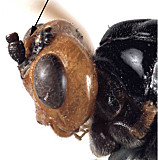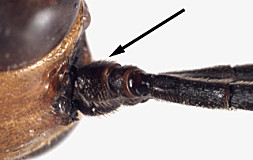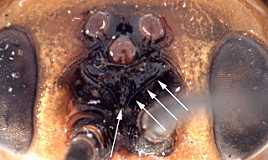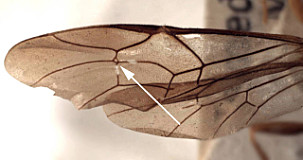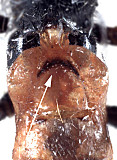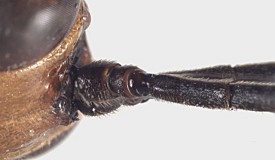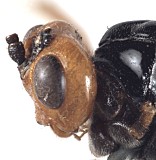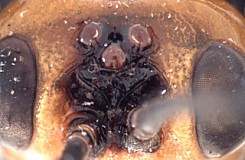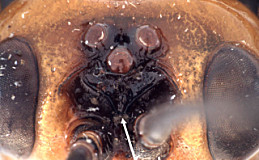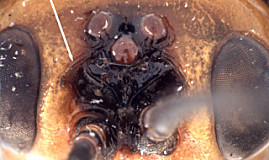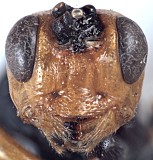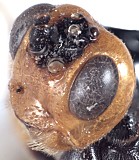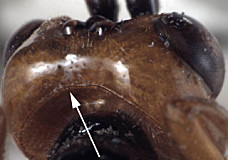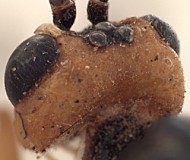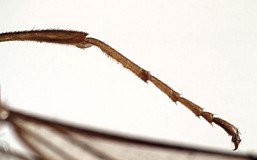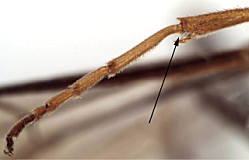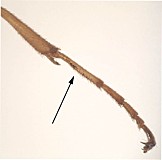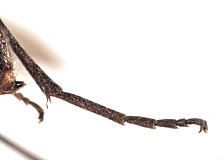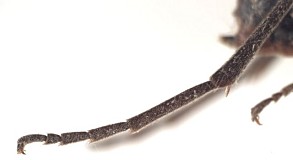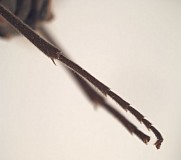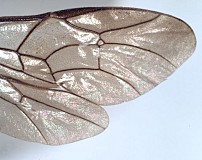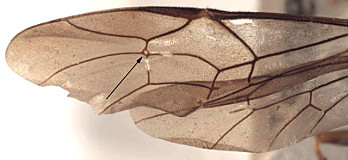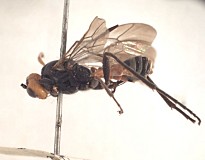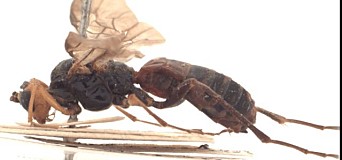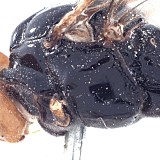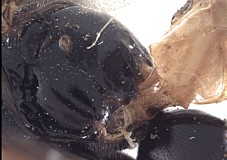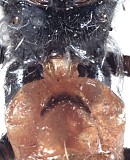Westwoodia romani Wharton and Roeder, 2008
Westwoodiini
Ctenopelmatinae
The species is named after A. Roman, who first recognized it as distinct from Westwoodia ruficeps.
An additional specimen Adelaide that Roman labelled as “not ruficeps” has the occipital carina absent medially (Fig. 8 above), and is somewhat intermediate between W. romani and W. longipes, emphasizing the close relationship between the two species. This Adelaide specimen has a well-developed fore wing areolet, and the remainder of the occipital carina well developed, and can thus be readily assigned to W. romani. Morley (1913) specifically mentioned the unusual features of this specimen in his redescription of W. ruficeps. For additional information, see the web page for W. longipes.
The occipital region is more densely setose in the few specimens available for study than it is in other species. However, this area is difficult to see without removing the head and many of the specimens are in poor condition. Thus, this character needs to be examined more closely with additional, fresh material to assure that it is not an artifact of the preservation of the material at hand.
Some additional figures, not used in the above section, are included here.
Distinguished from all other species of Westwoodia by the combination of a densely setose occiput, presence of a sharply defined occipital carina, and an interantennal carina that is not elevated as a prominent flange. This species is most similar to W. longipes based on the sculptural details of the interantennal area and frons and the setal pattern on the occiput. However, W. longipes lacks the fore wing areolet.
There are no specimens currently determined for this OTU, or those specimens determined for this OTU are not yet mappable.
top label = printed, black ink on white paper, 3 lines as follows:
Canberra A C T
11 Mar 1960
E F Riek
2nd label =printed and hand-written, black ink on white paper, 2 lines as follows:
Westwoodia
det. I. D. Gauld, 1984
Paratype ♀ (ANIC), 2 labels
top label = hand-written, black ink on white paper, 4 lines as follows:
From Brood 57
coll. Ringwood V
Emerged 12.3.36
J.W. Raff
2nd label = black ink on white paper, 2 lines (first hand-written, 2nd printed) as follows:
Westwoodia
det. I. D. Gauld, 1984
Paratype ♂ (ANIC), 2 labels
top label = hand-written, black ink on white paper, 4 lines as follows:
Brood 57
Ringwood
Emerged 11.3.36
JWR
2nd label = black ink on white paper, 2 lines (first hand-written, 2nd printed) as follows:
Westwoodia
det. I. D. Gauld, 1984
Paratype ♀ (WINC), 3 labels
top label = black ink on white paper, 4 lines, hand-written, as follows:
S. Aust. Naracoo®te
emeg. 7.iv.89
Colony 9
P. Weinstein
2nd label = black ink on white paper, 2 lines, hand-written, as follows:
ex pupa
Perga dorsalis
3rd label = black ink on white paper, 2 lines (first hand-written, 2nd printed) as follows:
Westwoodia
det. A.D. Austin
Weinstein, P. and A. D. Austin 1995. Primary parasitism, development and adult biology in the wasp Taeniogonalos venatoria Riek (Hymenoptera: Trigonalyidae). Australian Journal of Zoology 43: 541-555.
This material is based upon work supported by the National Science Foundation under Grant Number DEB 0328922 with REU supplement 0616851.
Any opinions, findings, and conclusions or recommendations expressed in this material are those of the author(s) and do not necessarily reflect the views of the National Science Foundation.
